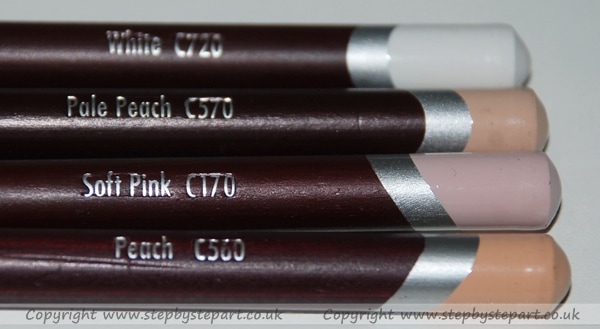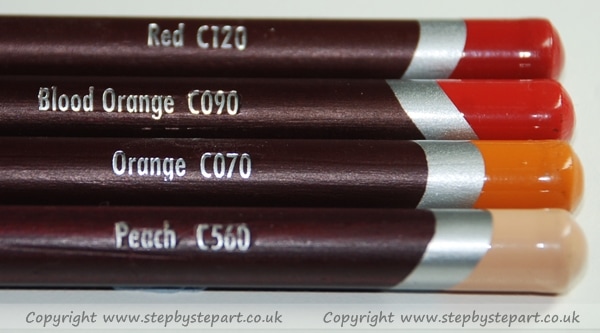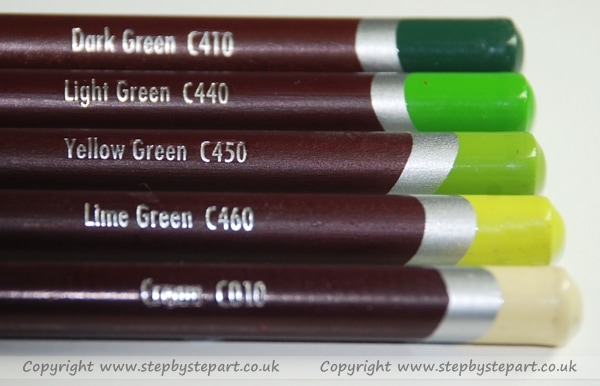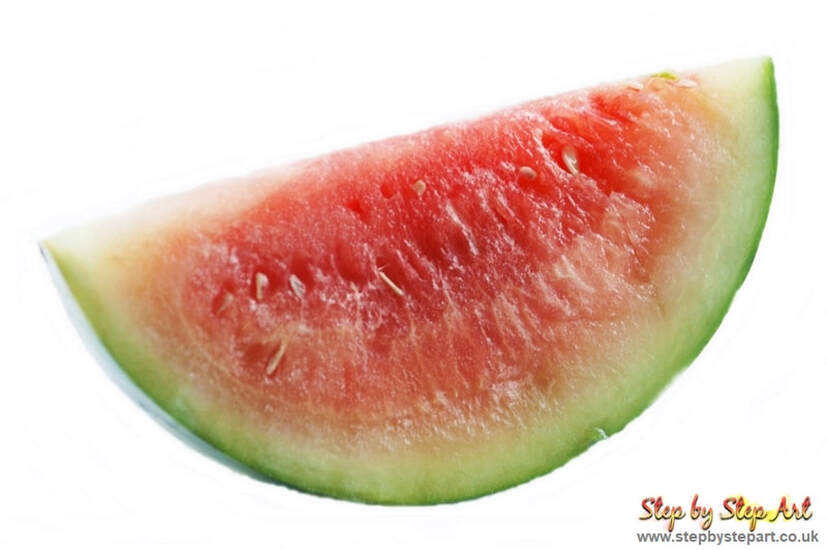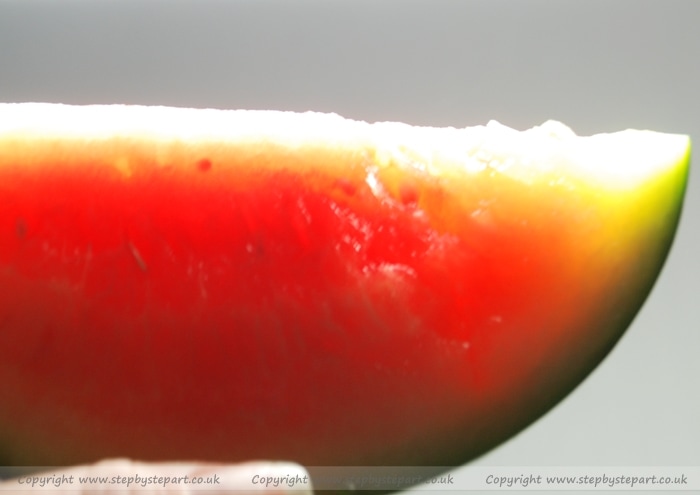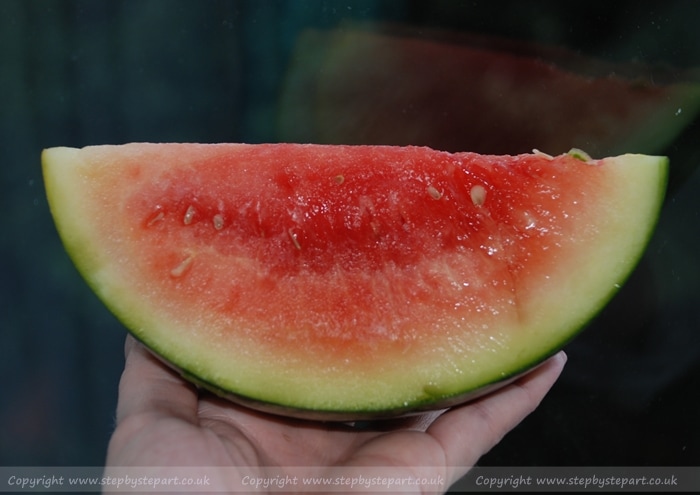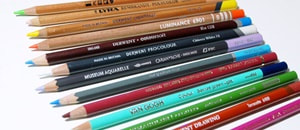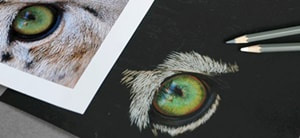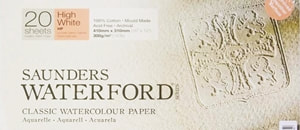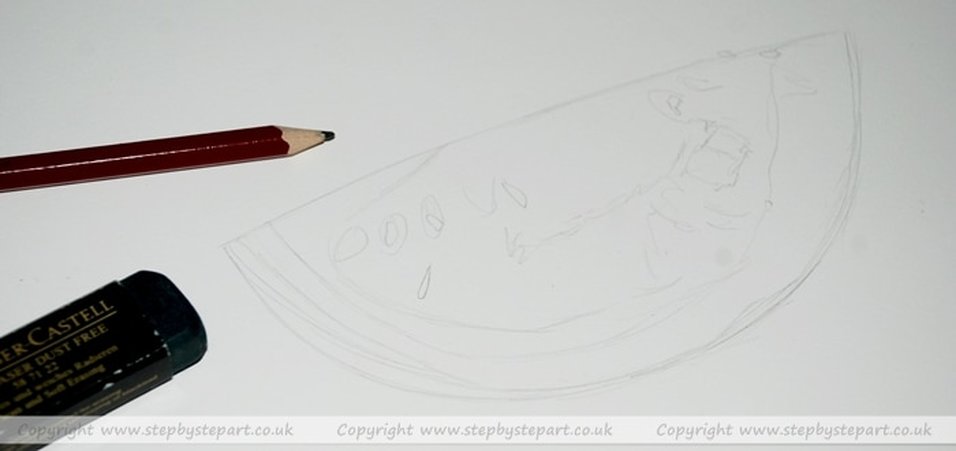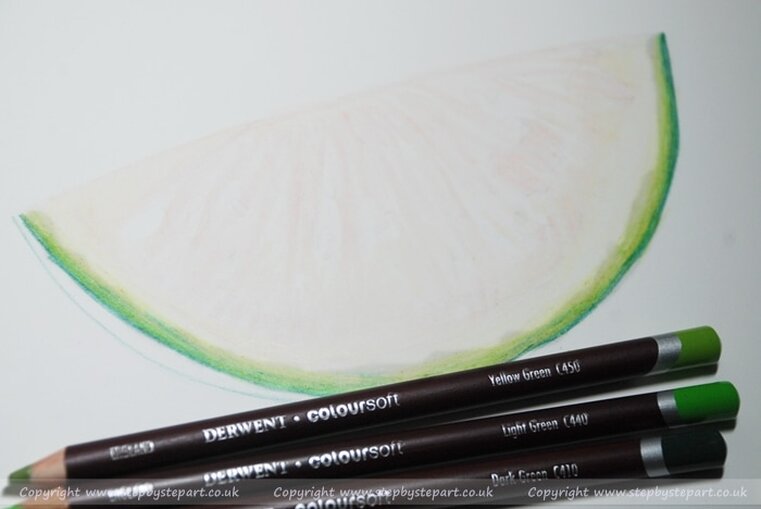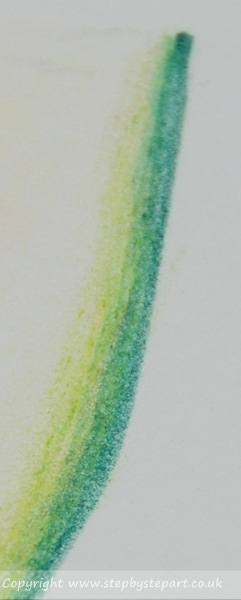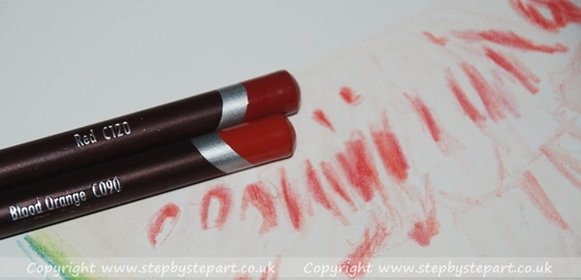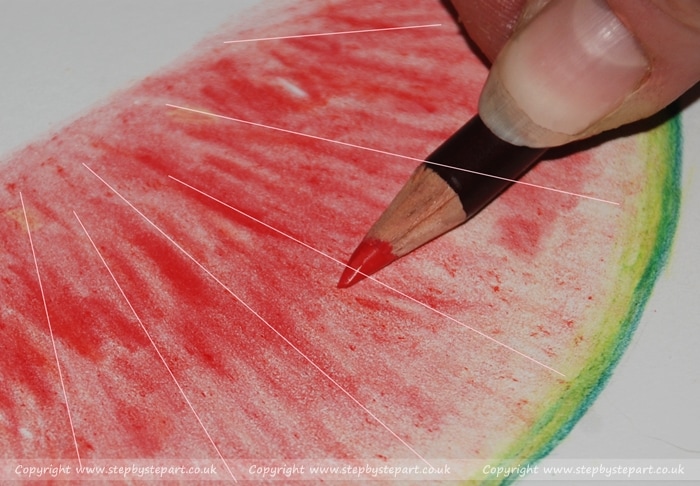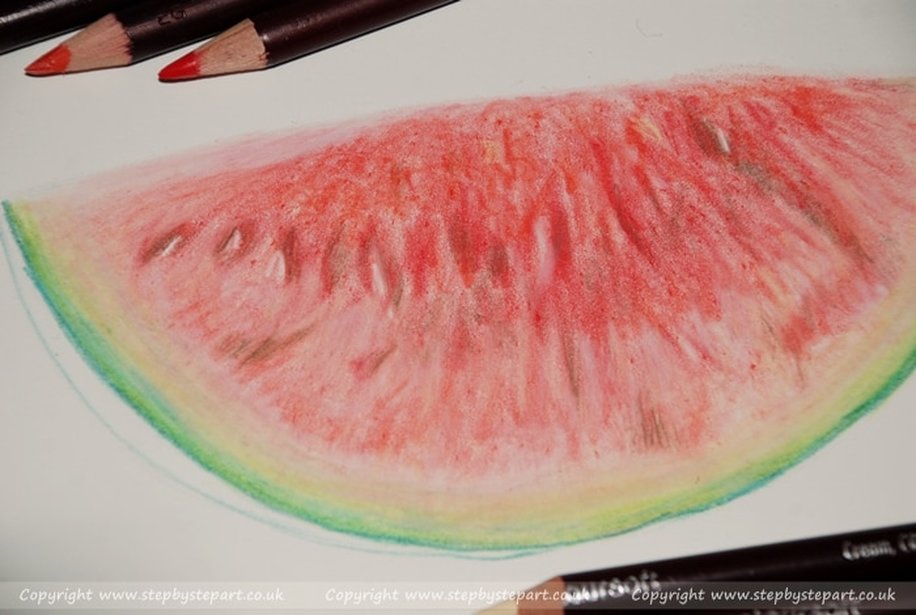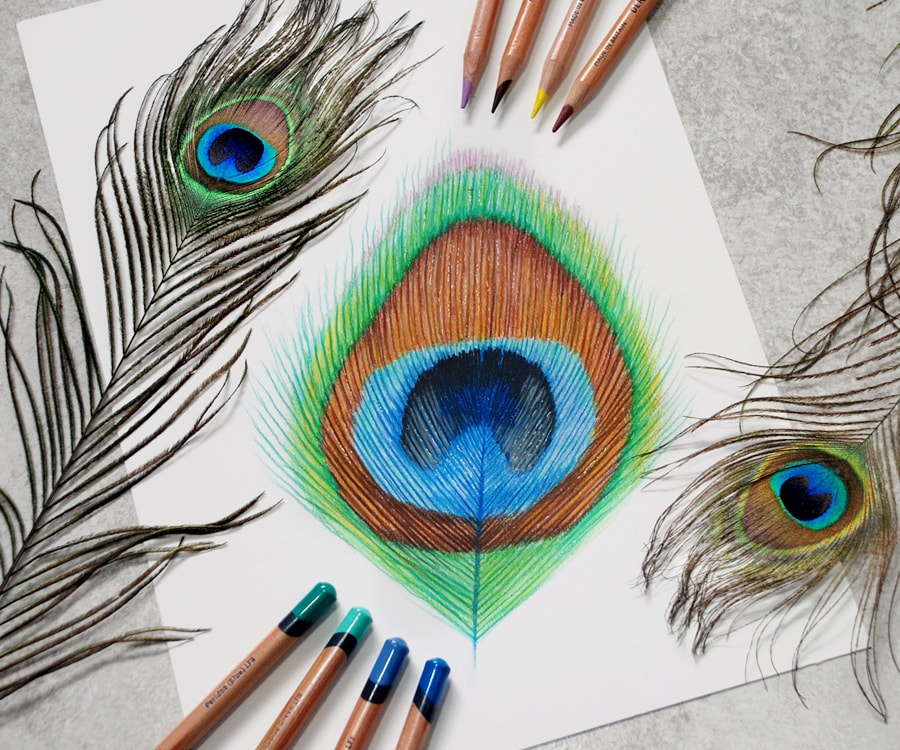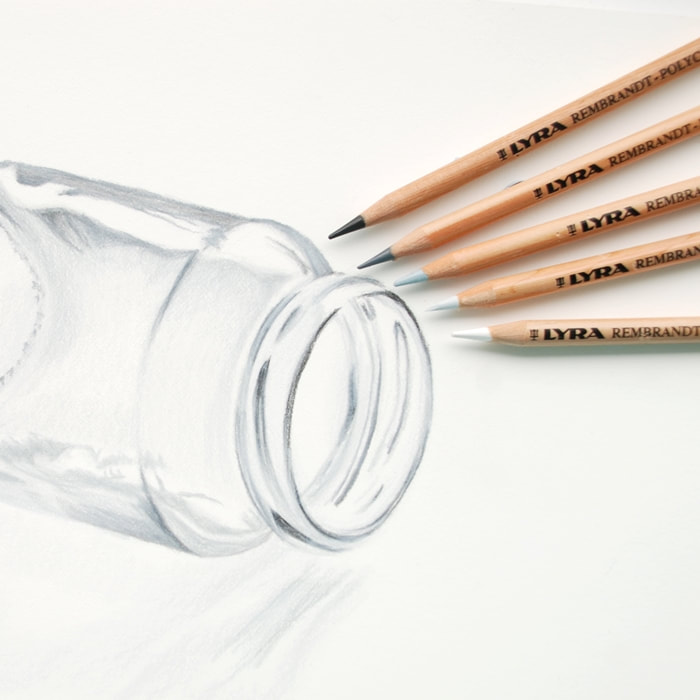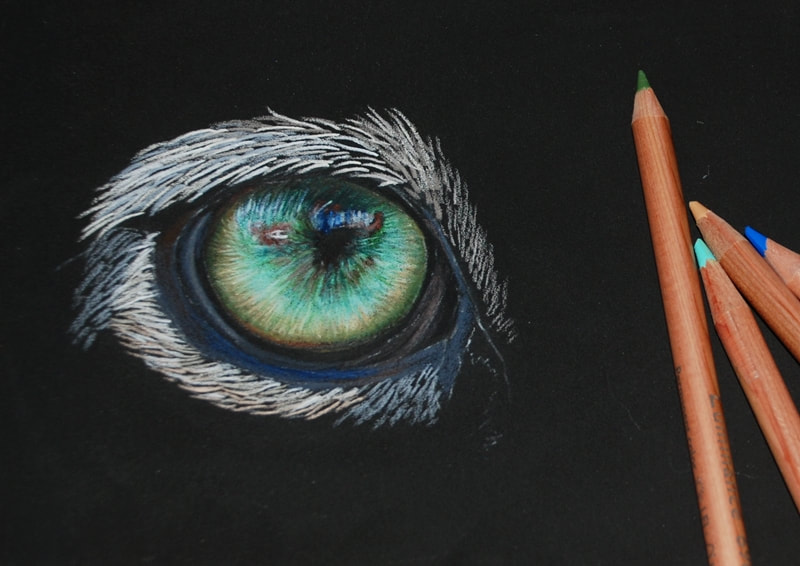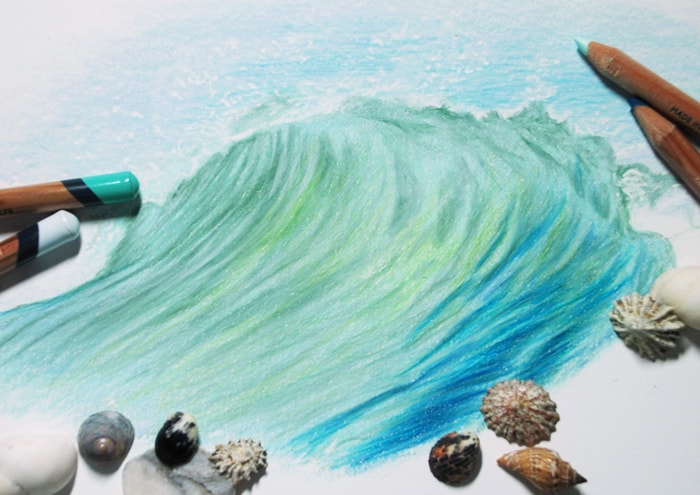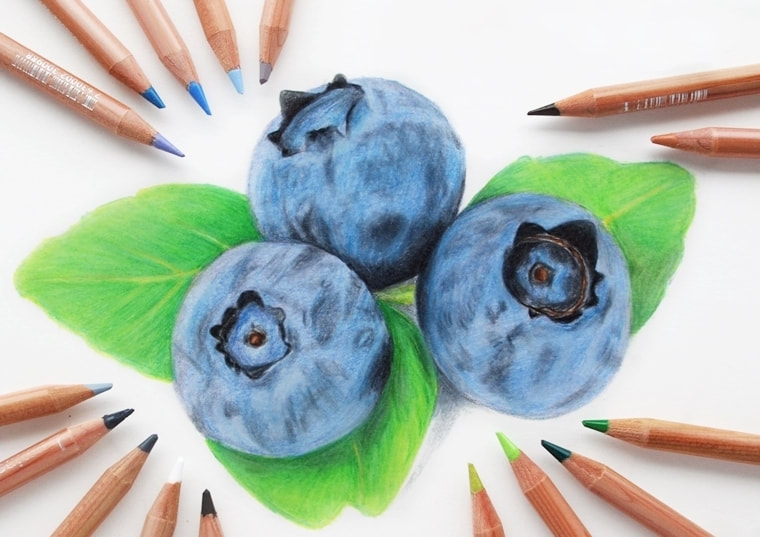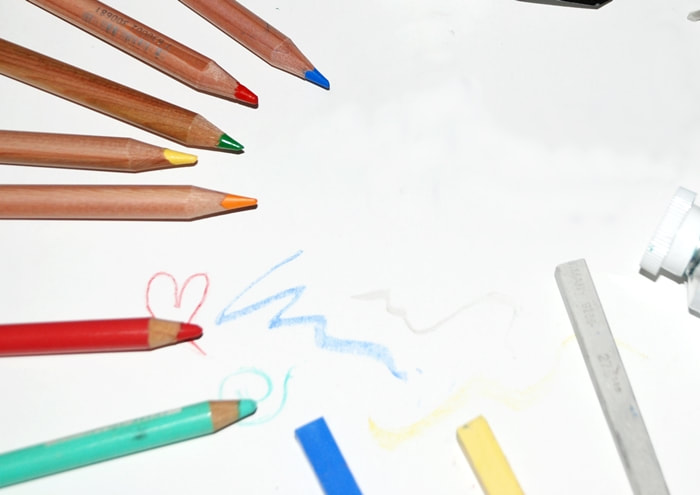Watermelon
Learn how to layer effectively using Coloured pencils
Artist level: Beginner
Written: March 2017
Welcome to this step by step tutorial of a watermelon in coloured pencils on Saunders Waterford hot pressed paper. The tutorial below is aimed at those interested in learning how to layer with coloured pencils to create detailed and effective Art which has been written for use with Derwent Coloursoft pencils, however regardless of which coloured pencil range you use, you can use the colour guide below the coloured pencil images to pick out your own colours for this exercise but it is not necessary to match them exactly. For a brightly coloured subject such as this Watermelon, a smooth white paper will be the best choice - any hot press watercolour paper will work well. Achieving effect in coloured pencil portraits are created by layering a selection of colours, light to dark first starting with a light application and building up to heavier ones - too much pressure of initial layers may saturate the paper too early and you will not be able to apply consecutive layers. This tutorial is aimed at beginners to coloured pencils but if you are an Intermediate user you can add more detail by using further colours than those shown here.
The reference image can be found below, which you can screen grab and print out or view on a tablet whilst reading the instructions on a smartphone or computer. The pencils used in this demo are the Derwent Coloursoft range, however you can pick similar colours from your own preferred pencil collection if you do not have the Coloursoft ones. Highly pigmented pencil ranges such as Prismacolor Premier or Derwent Lightfast would be ideal for this.
I hope you enjoy this tutorial and if you would like to request a subject for inclusion of a future mini tutorial, please get in touch!
The reference image can be found below, which you can screen grab and print out or view on a tablet whilst reading the instructions on a smartphone or computer. The pencils used in this demo are the Derwent Coloursoft range, however you can pick similar colours from your own preferred pencil collection if you do not have the Coloursoft ones. Highly pigmented pencil ranges such as Prismacolor Premier or Derwent Lightfast would be ideal for this.
I hope you enjoy this tutorial and if you would like to request a subject for inclusion of a future mini tutorial, please get in touch!
The Products you will need
Smooth white Art paper - Coloured pencils
Spare sheet of clean paper - Clean Eraser - Soft brush
Paper Used: Saunders Waterford Bright White Pencil range Used: Derwent Coloursoft
Spare sheet of clean paper - Clean Eraser - Soft brush
Paper Used: Saunders Waterford Bright White Pencil range Used: Derwent Coloursoft
IMPORTANT TIPS:
* Ensure your pencils have a long lead before starting, the side of the lead will be used as opposed to the point of the lead.
* To avoid transferring natural oils onto your drawing from your hands, have a clean sheet of paper to lean on whilst applying colour. Natural Oils from your skin and saliva can damage your Artwork which you may not be able to repair.
* Ensure your pencils have a long lead before starting, the side of the lead will be used as opposed to the point of the lead.
* To avoid transferring natural oils onto your drawing from your hands, have a clean sheet of paper to lean on whilst applying colour. Natural Oils from your skin and saliva can damage your Artwork which you may not be able to repair.
The reference image
Before you start....
Studying your subject before you even begin putting pencil to paper it may help to create a colour chart of the pencil colours you have so you can easily match tones, picking out the pencils you will be using before you begin. If you are working from still life, the first thing to do is choose the colours you will need. A simple subject like this watermelon may look like 4 or 5 colours will suffice but look carefully....how many colours actually make up the pulp of the fruit?
A tip I recommend for anything that is semi-translucent is to hold the subject up to natural lighting, how many more colours can you see now? Take a flash photo of the subject when possible, this can strengthen colours making it more vibrant which in turn will make your Artwork even more effective, it can also define those darker areas even further. How many colours can you see in the inner rind and the outer rind? What about the colours of those highlights of the fruit pulp. For this simple study, I opted to keep the colours I used to a minimum so as not to complicate this exercise too much, especially important if this is your first drawing with Coloured pencils, keep it simple as you may be able to add to it at a later date if the layers are not applied too thick and heavy.
IMPORTANT TIP: Coloursoft pencils are, as their name suggests soft, and it is recommended when layering colours that you begin by applying colours lightly using a softened point or the side of the 'lead' (see Stage 4 below) to avoid applying heavy lines to the paper which can spoil the soft and natural looking effect you are attempting to achieve - Using a BLENDER can help create a smooth transition of colour too but if pencil lines are applied too heavily, a blender will not be able to smooth them out.
Where do I start?
For a subject as colourful as this watermelon, working on a bright white paper will be ideal as it will really show off its colours. Begin by drawing your outline using a HB or B pencil. It does not have to be perfect in shape, but do ensure you apply all the important sections such as the 'pips', marking out the edges of where the rind meets the pulp as well as defining the markings in the pulp and the highlights too. Avoid drawing a heavy outline so it can be erased as you go along, do not apply colours over the graphite outline as you will seal them below the colour and may spoil your work. Remember to keep early colour applications relatively loose and light.
